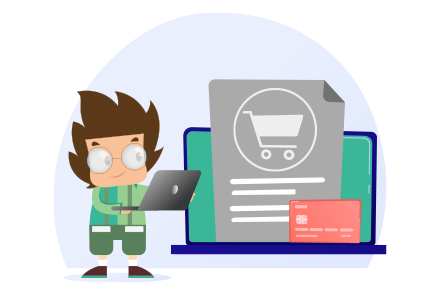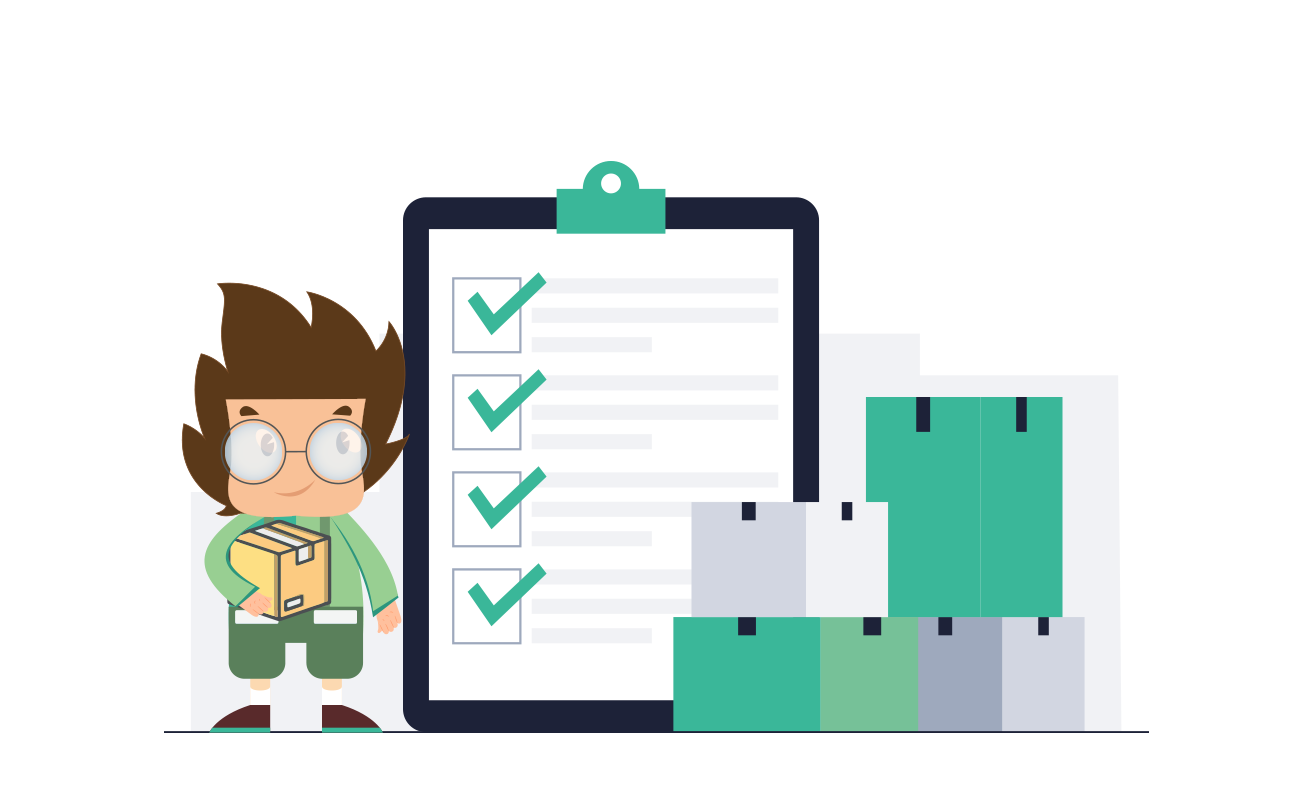All You Need to Know About Purchase Order
A good supply chain management strategy depends on an effective procurement process for major organizations or small, developing businesses. We’ll delve further into purchase order terms and conditions in this blog
What Is a Purchase Order?
A purchase order, often known as a PO, is a legal document that a customer delivers to a vendor or supplier to authorize a transaction. Purchase orders specify the goods the buyer wants to buy and how much of it they want to receive. These contracts aid in the documentation of transactions for the buyer and seller.
Sound too simple? It is. Yes, the procedure of acquiring items can be trickier than what was previously described. Payment problems, supply shortages, misunderstandings that result in improper shipments, and schedule delays can all occur.
The Purpose of a Purchase Orders
Your purchasing procedures must include purchase orders. Purchase orders (POs), which are legally binding documents, detail the purchasing component of your inventory management system.
You Can Check out the past blog about inventory management Problems
A PO is a legal document; once a supplier accepts it, it becomes a legally enforceable contract. Acknowledgment, formal approval, or carrying out the order by the terms of the purchase order are all acceptable forms of acceptance.
Purchase orders assist the customer and supplier in accurately recording the transaction for use as evidence in the event of a disagreement. For instance, once the inventory stock you ordered arrives, the following steps are to verify that it corresponds, receive it, and submit payment for an invoice. Occasionally, your order won’t be accurate or match, in which case you’ll need to return it to the source.
PO Format
Are you prepared to draft your own purchase order? The details that you must include are listed below.
Header
Give information about your business, such as your company name, mailing address, purchase order number, and date.
Vendor details
List the appropriate person to receive the purchase order. Here, you should put the seller company’s name, your particular contact information, and its address.
Send to
Indicate the shipment address, the shipping method, the shipping conditions, and the target delivery date for the order.
Order information
Give a line item for each product in the order, together with the product code or SKU number, item name or description, required number of units, cost per unit, and delivery date.
Summarize
Give a subtotal, any applicable discounts, taxes, shipping fees, and a grand total to finish the purchase order.
What Should a Purchase Order Include?
Purchase orders specify what the buyer wants to buy, and how many units they want to receive, and frequently include the terms and conditions of the transaction.
Given the significance of a purchase order document, companies in New Zealand typically use a standard purchase order form that, when applicable, tends to include the information below:
- PO number (frequently aligned with the invoice number to link the two records, which is crucial for generally reconciling tax records)
- PO date
- Supplier information
- Info about the buyer and shipping address
- Description and quantity of goods/services you want to buy including price per unit
- Discount
- Delivery fee
- Total amount excluding GST
- GST
- Net amount
- Payment information
- Terms and conditions
Also, read What Is Order Management System
How Many Types of PO Are There?
It is vital to remember that not all purchase orders are made equally. If you’ve seen one purchase order, you’ve probably seen them all by this time, but that’s just not the case. There are actually five different kinds of purchase orders, and each carries a different amount of information.
- Standard Purchase Orders
- Planned Purchase Orders
- Blanket Purchase Orders
- Contract Purchase Orders
- Digital Purchase Orders
Standard Purchase Orders
The most popular and well-known purchase orders are standard ones. In this case, the buyer is aware of the specifics of the transaction and can specify the product or service they are purchasing, as well as the quantity, delivery date, and terms of payment.
For instance, a business that is low on printer cartridges might submit a normal purchase order because they are certain of the quantity and delivery date they require. Here is a possible illustration of that purchase order.
Depending on your needs, standard purchase orders can be created for a variety of different purposes. The aforementioned template, for instance, could be modified for:
- Services to be rendered
- Subcontracting
- Consignment
Planned Purchase Orders
By submitting a scheduled purchase order in advance, a buyer is projecting how much of the goods their business will require in the future. The item, price, and payment terms are known in this instance, but the quantity and delivery date are speculative and dependent on educated guesses.
For instance, the buyer in charge would determine how many printer cartridges they require with a more flexible delivery schedule if the same company that is running low on printer cartridges placed a scheduled PO. Here is a possible illustration of that purchase order.
Blanket Purchase Orders
When using a blanket PO, a buyer places several orders simultaneously to bargain for lower prices.
For instance, a company might think about using a blanket PO to buy printer cartridges and paper if doing so would allow it to negotiate a better price from a single supplier. Here is an example of how a purchase order might appear in this situation.
Contract Purchase Orders
The most formal type is a contract purchase order. In this instance, a contract specifying the terms of the sale is signed by the buyer and seller prior to the issuance of a PO that refers to the contract. The most comprehensive level of legal defense is provided by this kind of purchase order.
Using the example of printer supplies, these businesses would be bound by a contract purchase order agreement if they enter into a contract with their supplier outlining the items, quantity, pricing, and delivery schedule and then follow that up with a regular purchase order. Here is a possible illustration of that purchase order.
Digital Purchase Orders
A defined procedure for purchase orders can make the procurement process run smoothly and be advantageous to both buyers and sellers.
In Microsoft Excel or Open Office, a digital PO can be quickly created and shared. When you open a new spreadsheet, select More Templates, and type “invoice” into the search bar, you can access pre-existing templates.
Although we have distinguished between invoices and purchase orders, Excel allows you to search for both under this keyword. Of course, you can alter the template to your desire to add the particular items you require.
Purchase Order Terms and Conditions
The rights and obligations of the supplier and the customer are outlined in the terms and conditions of a PO, which together constitute the whole agreement of the purchase order. Depending on the exact terms and conditions set in the offer and the purchase order, the purchase order protects both the supplier and the customer against any accidents when the terms and criteria are present.
It is unnecessary to establish new terms and conditions for each transaction when you first begin a business relationship with a new supplier since the parties frequently agree on upfront on the terms and conditions that apply to all straightforward transactions. Therefore, contractual terms and conditions may or may not be included in the purchase order. Thought should be given to including fundamental terms and conditions in the purchase order in the absence of any prior agreements between the supplier and the buyer.
These fundamentals are often included in PO terms and conditions:
- General description of the terms and conditions and subject matter
- Buyer rights, obligations, and incentives
- Supplier rights, obligations, and incentives
- Payment terms show in detail any incentives or penalties
- Confidentiality
- Insurance
- Dispute resolution
- Termination
- Definitions
Conclusion
It is simpler to keep track of where the entire purchase ordering process is at and to quickly refer to the purchase order, when necessary when using a supplier management software solution like New G Solution. It’s more effective, more accountable, and gives you more time to concentrate on expanding your company. We strongly advise you to get independent legal counsel, particularly when transacting with high-risk, high-value, and high-complexity goods and services.






Recent Comments